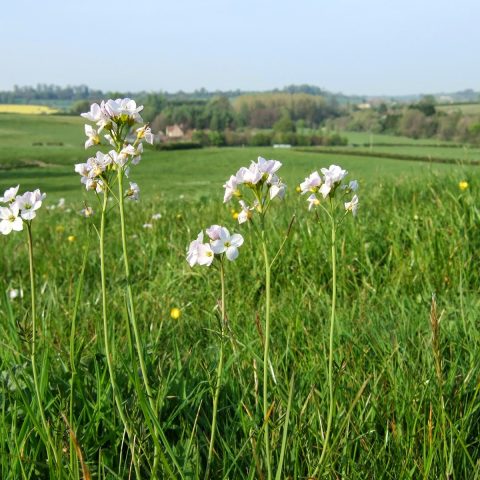Royal Society for the Protection of Birds' story
Montiaghs Moss, a cut over lowland raised bog, is designated as a Natura 2000 site for the marsh fritillary butterfly. Royal Society for the Protection of Birds (RSPB) and Butterfly Conservation have been carrying out works at the site that will enable the food plant (devil's bit scabious) of the butterfly to thrive. Works have included scrub removal, rush cutting, grazing with cattle and Hebridean sheep, and planting plants grown from locally-collected seed.
RSPB and Butterfly Conservation are working closely with local farmers, stakeholders and the local community in the management of the site. A car park, boardwalk and interpretation will ensure that local people and visitors from further afield can enjoy the site and immerse themselves in nature. Montiaghs Moss will become an RSPB Reserve soon.
The project is funded via Co-operation Across Borders for Biodiversity (CABB), a five-year, six-partner, three-country project itself funded through the EU Interreg VA programme. The headline outputs in relation to climate change mitigation are to deliver 2,228ha of blanket bog in better condition through drain blocking, thus raising the water level preventing carbon loss and sequestering more carbon. CABB is also delivering for individual species, including the marsh fritillary butterfly.
Useful learnings from Royal Society for the Protection of Birds
Montiaghs Moss is a lowland peatland in County Antrim. Located near Lough Neagh, this 151-ha relic raised bog is a mosaic of peat ramparts, trenches, pools and drains interspersed with grassland, trees and hedgerows. The peat cutting that shaped (and degraded) the site ended in the 1980s. However, Montiaghs Moss remains a stronghold for the marsh fritillary butterfly (Euphydryas aurinia) and other rare species, including a vital assemblage of invertebrates. Recognition of the unique biodiversity of Montiaghs Moss drives plans for its restoration, which is currently assessed as 'unfavourable'.
Restoration at Montiaghs Moss requires maintaining the open wet grassland which is the food plant of the marsh fritillary butterfly. RSPB NI is working in partnership with Butterfly Conservation to remove scrub and increase the food plant for the butterfly. This also involves raising water levels, which leads to the restoration of degraded lowland raised bog and carbon sequestration. RSPB is also managing the site to maintain and create open water pools which are the habitat necessary for Irish damselfly. We strive to have a mosaic of habitats and species and to ensure that the site achieves and stays in good condition in terms of its designations. Maintenance of the site is about managing water levels, scrub removal, grazing and public access to provide a biodiverse site that still manages to store carbon.
This is the kind of trade-off that needs to be carefully managed to ensure we do not promote a blinkered 'carbon-at-all-costs' approach to achieving net-zero. We need to ensure that we deliver nature restoration at a scale that will contribute to a net-zero, nature positive world.
Improvements at the site should facilitate an increase in visitors from 250 to 1,500 a year over the next five years, expanding beyond wildlife monitoring to recreational visits.
Royal Society for the Protection of Birds' metrics
% of the site in favourable condition.
Marsh fritillary butterfly and other species counts.
Number of visitors per year.
Numbers of Irish damselflies.





